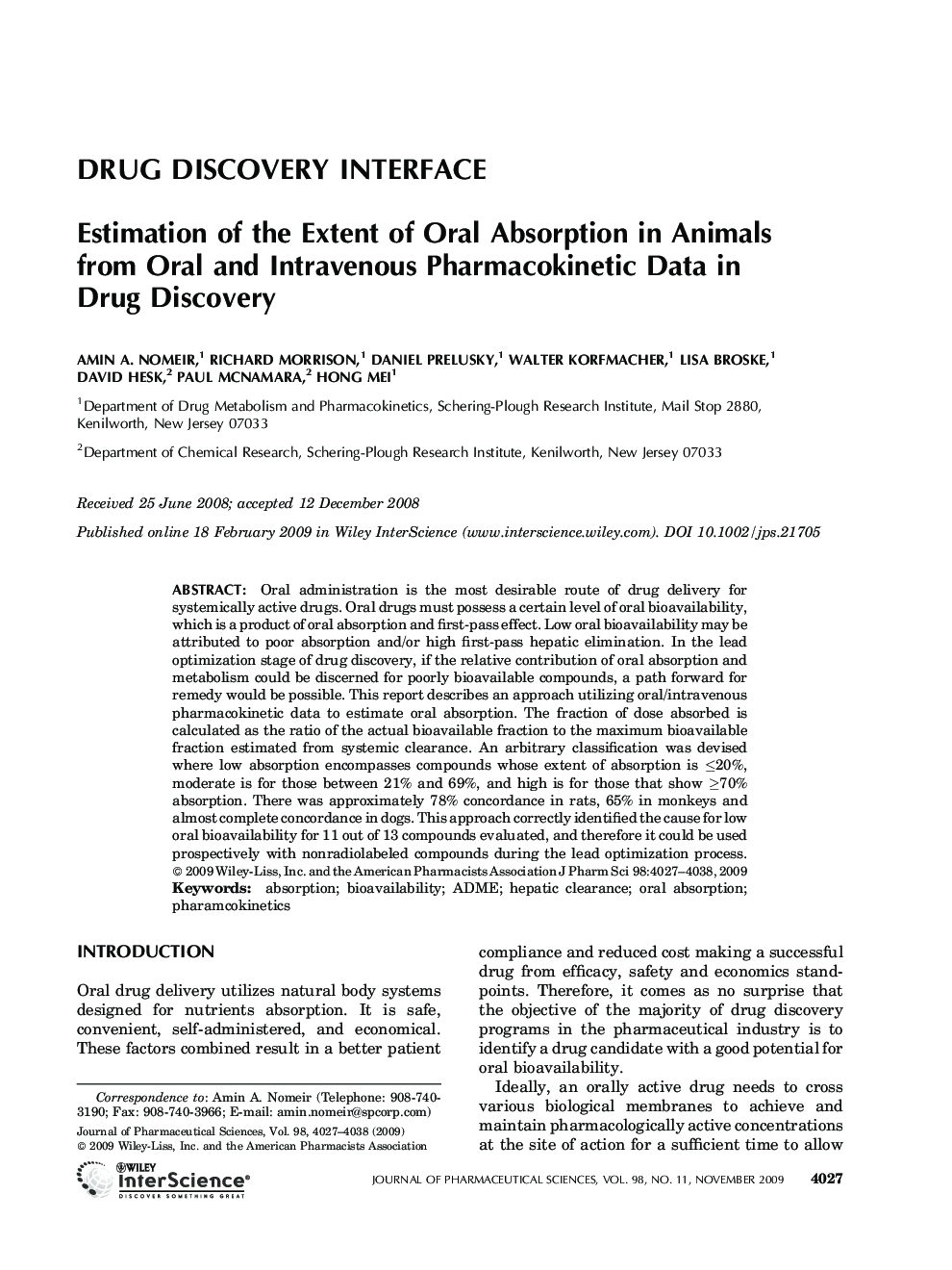| Article ID | Journal | Published Year | Pages | File Type |
|---|---|---|---|---|
| 2486938 | Journal of Pharmaceutical Sciences | 2009 | 12 Pages |
Abstract
Oral administration is the most desirable route of drug delivery for systemically active drugs. Oral drugs must possess a certain level of oral bioavailability, which is a product of oral absorption and first-pass effect. Low oral bioavailability may be attributed to poor absorption and/or high first-pass hepatic elimination. In the lead optimization stage of drug discovery, if the relative contribution of oral absorption and metabolism could be discerned for poorly bioavailable compounds, a path forward for remedy would be possible. This report describes an approach utilizing oral/intravenous pharmacokinetic data to estimate oral absorption. The fraction of dose absorbed is calculated as the ratio of the actual bioavailable fraction to the maximum bioavailable fraction estimated from systemic clearance. An arbitrary classification was devised where low absorption encompasses compounds whose extent of absorption is â¤20%, moderate is for those between 21% and 69%, and high is for those that show â¥70% absorption. There was approximately 78% concordance in rats, 65% in monkeys and almost complete concordance in dogs. This approach correctly identified the cause for low oral bioavailability for 11 out of 13 compounds evaluated, and therefore it could be used prospectively with nonradiolabeled compounds during the lead optimization process. © 2009 Wiley-Liss, Inc. and the American Pharmacists Association J Pharm Sci 98:4027-4038, 2009
Related Topics
Health Sciences
Pharmacology, Toxicology and Pharmaceutical Science
Drug Discovery
Authors
Amin A. Nomeir, Richard Morrison, Daniel Prelusky, Walter Korfmacher, Lisa Broske, David Hesk, Paul McNamara, Hong Mei,
